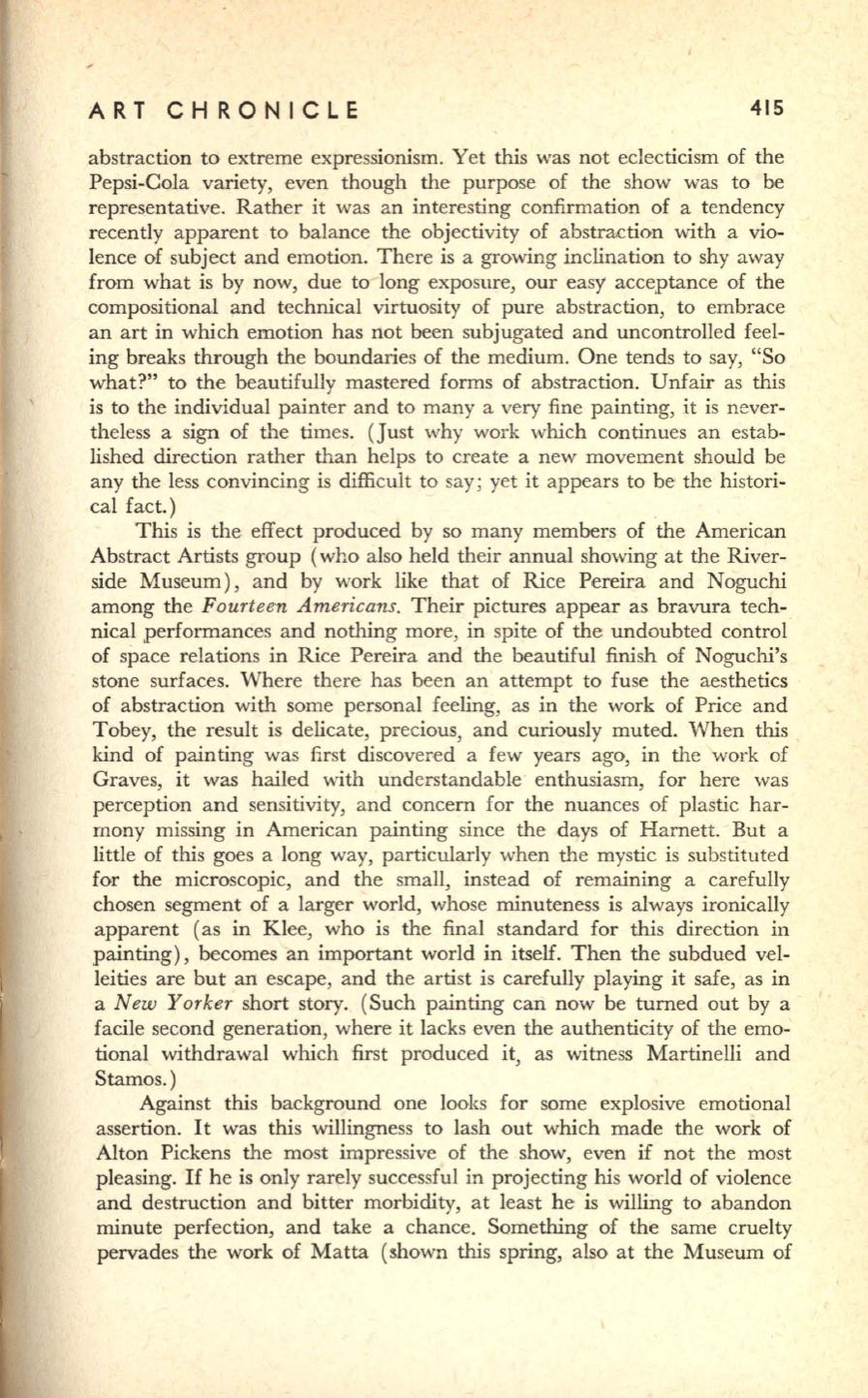
ART CHRONICLE
415
abstraction to extreme expressionism. Yet this was not eclecticism of the
Pepsi-Cola variety, even though the purpose of the show was to be
representative. Rather it was an interesting confirmation of a tendency
recently apparent to balance the objectivity of abstraction with a vio–
lence of subject and emotion. There is a growing inclination to shy away
from what is by now, due to long exposure, our easy acceptance of the
compositional and technical virtuosity of pure abstraction, to embrace
an art in which emotion has not been subjugated and uncontrolled feel–
ing breaks through the boundaries of the medium. One tends to say, "So
what?" to the beautifully mastered forms of abstraction. Unfair as this
is to the individual painter and to many a very fine painting, it is never–
theless a sign of the times. (Just why work which continues an estab–
lished direction rather than helps to create a new movement should be
any the less convincing is difficult to say; yet it appears to be the histori–
cal fact.)
This is the effect produced by so many members of the American
Abstract Artists group (who also held their annual showing at the River–
side Museum), and by work like that of Rice Pereira and Noguchi
among the
Fourteen Americans.
Their pictures appear as bravura tech–
nical performances and nothing more, in spite of the undoubted control
of space relations in Rice Pereira and the beautiful finish of Noguchi's
stone surfaces. Where there has been an attempt to fuse the aesthetics
of abstraction with some personal feeling, as in the work of Price and
Tobey, the result is delicate, precious, and curiously muted. When this
kind of painting was first discovered a few years ago, in the work of
Graves, it was hailed with understandable enthusiasm, for here was
perception and sensitivity, and concern for the nuances of plastic har–
mony missing in American painting since the days of Harnett. But a
little of this goes a long way, particularly when the mystic is substituted
for the microscopic, and the small, instead of remaining a carefully
chosen segment of a larger world, whose minuteness is always ironically
apparent (as in Klee, who is the final standard for this direction in
painting), becomes an important world in itself. Then the subdued vel–
leities are but an escape, and the artist is carefully playing it safe, as in
a
New Yorker
short story. (Such painting can now be turned out by a
facile second generation, where it lacks even the authenticity of the emo–
tional withdrawal which first produced it, as witness Martinelli and
Stamos.)
Against this background one looks for some explosive emotional
assertion. It was this willingness to lash out which made the work of
Alton Pickens the most impressive of the show, even if not the most
pleasing.
If
he is only rarely successful in projecting his world of violence
and destruction and bitter morbidity, at least he is willing to abandon
minute perfection, and take a chance. Something of the same cruelty
pervades the work of Matta (shown this spring, also at the Museum of


